Opinion & Analysis
Analyzing Tom Watson’s Potential Ryder Cup picks
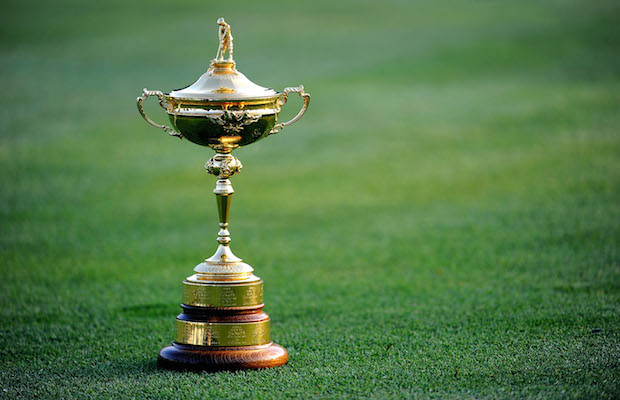
Captain Tom Watson’s captain’s picks for the Ryder Cup became more difficult when Dustin Johnson announced that he will not play in the event. And that was just the start.
I’ve posted the current U.S. Ryder Cup Team standings below. Remember, the top-9 finishers on the points list automatically earn a spot on the team, and T. Watson will pick two additional players of his choice to round out the lineup. Qualifying finishes this weekend at the conclusion of the PGA Championship.
- Bubba Watson
- Jim Furyk
- Jimmy Walker
- Rickie Fowler
- Matt Kuchar
- Jordan Spieth
- Patrick Reed
- Jason Dufner
- Zach Johnson
- Phil Mickelson
- Keegan Bradley
- Brendan Todd
- Ryan Moore
- Chris Kirk
- Webb Simpson
- Harris English
Jason Dufner (No. 8) announced that he has bulging disks in his neck, and Tiger Woods, who all expected to either make the team or be a captain’s pick before his back surgery, has yet to play well enough to prove that he can be a good addition to the Ryder Cup team, even if he is 100 percent healthy. To make things worse, Matt Kuchar (No. 5) withdrew from the PGA Championship today with back spasms, bringing his health into question.
The U.S. Team will also be playing against an impressive European team that has a red hot Rory McIlroy and Sergio Garcia. Despite these recent events, I still believe that a statistically oriented approach to the Ryder Cup can greatly overcome these odds.
First, I want to run over some of the main tenets when it comes to using a statistically oriented approach to the Ryder Cup:
No. 1: Versatility is critical
Ryder Cup teams need golfers who are suited to play both the four-ball and foursome format. This way, if a player is playing poorly, the team does not have to rely on him to start playing well and can have a different golfer come in and win valuable point(s).
No. 2: When in doubt, favor youth over experience
Most of the U.S. Ryder Cup team captains in recent years have favored experience above all else. Even if a Ryder Cup player is experienced, however, if he has proved to be a poor Ryder Cup player he is simply an experienced, poor Ryder Cup player.
The other part about youth is that if a young player gets a hot hand, the captain can keep him in the lineup without worrying about his stamina. That’s not always true for an older player or an injured player. Lastly, it serves future Ryder Cup teams to see how well these young players perform. It will help future captains better determine if they are a good, poor or indifferent Ryder Cup players.
No. 3: Favor players with great short games over the “hot putter”
While being a good putter is certainly helpful, the best Ryder Cup players historically have been very good around the green. This includes players like Luke Donald, Ian Poulter, Jesper Parnevik, Raymond Floyd, Billy Casper, Larry Nelson and Seve Ballesteros, to name a few. The problem with looking purely at putting is that it is hard to rely on player to putt well at any given moment. Even the best putters on Tour putt great (+1.0 strokes gained per round per event) in only about 30 percent of the events they play. Conversely, players with good short games can take that short game from event to event much more consistently, and the ability to save par and stymie your opponent appears to be critical to successful match play.
No. 4: Four-ball format is about birdies and playing each type of hole well
In the four-ball format, Ryder Cup team captains want players who can make a lot of birdies. One of my favorite teams in the four-ball format was Boo Weekley and J.B. Holmes in 2008. Weekley is a long hitter who finds a ton of fairways and is usually one of the most effective drivers of the ball. Holmes was the long distance hitter who made a ton of birdies and had the capability to make eagles. So they would have Weekley tee off first and he would usually blast a 300+ yard drive down the middle. And if Weekley was in good shape that would allow Holmes to get a free rip and blast a 375+ yard drive. If the ball was in play, it would put them at a sizeable advantage. Weekley was also a strong par-4 player and a pretty good par-3 player, while Holmes was an excellent par-5 player. Essentially, they had all of their bases covered and could rattle off birdies.
5. Foursome format is about avoiding bogeys and pairing players whose styles of play compliment each other
The foursome format is where bogeys are more likely to happen and this is where a great short game can be even more important. You can have two players who make few bogeys, however, who are a terrible match for each other. For instance, Phil Mickelson and Jim Furyk may not make a lot of bogeys, but that is on their own ball. Furyk is a player who hits fairways and does not play well from the rough. Since Mickelson is an errant driver of the ball, the combination would not likely be a very good one.
With those out of the way, here’s a table looking at the rankings of some key players that are not in the top-8 in Ryder Cup points. You can click the table to enlarge it.
I will start with some of the obvious players. Zach Johnson should be a sure fire pick if he doesn’t automatically qualify. He’s played well in previous Ryder Cups and his rankings in the key performance metrics are excellent. In fact, he has done a nice job of hitting shots from the rough this year, which have typically given him issues. And he has been spectacular on the par-5’s despite being a short hitter.
I would also eliminate the following players:
- Matt Every (poor driving and par-4 play).
- Erik Compton (poor driving, poor iron play, poor bogey rate).
- Webb Simpson (poor 175-to-225 yards play)
- Brendon Todd (poor 175-to-225 yards play)
- Kevin Stadler (poor par-4 play)
The Ryder Cup courses generally favor hitting shots from 175-to-225 yards, so I would be leery of using any player who has struggled from that distance this year. And since there are 11 par-4’s to be played, the team cannot afford a weak par-4 player.
From there, I will bring it down to these players for the final three spots.
- Phil Mickelson
- Keegan Bradley
- Ryan Moore
- Kevin Na
- Harris English
- Brian Harman
Keegan Bradley becomes the first obvious choice. He has driven it well and has been good with his long approach shots, short game and putting. The issue for Bradley has been iron shots from less than 175 yards. However, he can be paired with an accurate driver of the ball and keep him playing those shots from the fairway. Combine that with his performance on par-3’s, par-4’s and par-5’s and his Birdie Rate, and Bradley is a versatile player who played superbly in the last Ryder Cup.
Mickelson
I will assume that Phil Mickelson will be selected if he does not automatically qualify. Regardless of what the data says, I have a hard time believing a captain would not select Lefty if he is healthy. So as far as his analysis goes, he’s been a streaky Ryder Cup player. But, he has been better in recent Ryder Cups.
The interesting thing about Phil is that while he has had an off year, the numbers indicate that he is better suited for the Ryder Cup than he has been over the years. His driving has been the best it has been in years, although I would not call him overly accurate. What has hurt him this year, however, is that his iron play has not been quite as good from inside 175 yards than it has been in previous seasons, but he is still a great long approach player. The other issue is that his putting was giving him issues, but we have seen some progression lately.
I don’t think Phil will be a bad pick, although both Ryan Moore and Brian Harman are enticing. Harman is ranks 6th on shots from the fairway, has a good short game and has quality scoring metrics. If there is a worry about Mickelson, it’s that he has yet to finish in the top-10 this year and suffered back problems earlier in the year. I would not be vehemently against a Mickelson pick, but I am not assuming that he and Keegan Bradley will automatically pick up where they left off in 2012 at Medinah.
The Last Pick
This player currently has all of the elements of a good Ryder Cup player.
- He has a super low bogey rate.
- He has a great short game.
- He is one of the premier putters on Tour.
- He hits his long approach shots well from both the rough and the fairway.
- He has having a fine year with his scoring metrics.
- He is only 30 years old.
Who is this player? If you guessed Kevin Na, you are correct.
The possible knock against Na is he has gone fairly unnoticed this year. He has five top-10 finishes, however, which include two second-place finishes. He also finished T12 at the US Open.
The other knock against Na may be his slow play. That could aggravate his partner, but it may aggravate his opponents as well. Colin Montgomerie was not overly liked and was a phenomenal Ryder Cup player, and Sergio was one of the slowest players on Tour during his unbeatable years in the Ryder Cup.
Regardless of how this year’s Ryder Cup qualifying plays out, I see Captain Watson making sure that Mickelson, Z. Johnson, Bradley, Simpson and Dufner (if he’s healthy enough) for this year’s team. That’s a shame, because I’d like to see Harman and especially Na get a chance to prove that they could be fantastic Ryder Cup players.
Opinion & Analysis
The 2 primary challenges golf equipment companies face

As the editor-in-chief of this website and an observer of the GolfWRX forums and other online golf equipment discourse for over a decade, I’m pretty well attuned to the grunts and grumbles of a significant portion of the golf equipment purchasing spectrum. And before you accuse me of lording above all in some digital ivory tower, I’d like to offer that I worked at golf courses (public and private) for years prior to picking up my pen, so I’m well-versed in the non-degenerate golf equipment consumers out there. I touched (green)grass (retail)!
Complaints about the ills of and related to the OEMs usually follow some version of: Product cycles are too short for real innovation, tour equipment isn’t the same as retail (which is largely not true, by the way), too much is invested in marketing and not enough in R&D, top staffer X hasn’t even put the new driver in play, so it’s obviously not superior to the previous generation, prices are too high, and on and on.
Without digging into the merits of any of these claims, which I believe are mostly red herrings, I’d like to bring into view of our rangefinder what I believe to be the two primary difficulties golf equipment companies face.
One: As Terry Koehler, back when he was the CEO of Ben Hogan, told me at the time of the Ft Worth irons launch, if you can’t regularly hit the golf ball in a coin-sized area in the middle of the face, there’s not a ton that iron technology can do for you. Now, this is less true now with respect to irons than when he said it, and is less and less true by degrees as the clubs get larger (utilities, fairways, hybrids, drivers), but there remains a great deal of golf equipment truth in that statement. Think about it — which is to say, in TL;DR fashion, get lessons from a qualified instructor who will teach you about the fundamentals of repeatable impact and how the golf swing works, not just offer band-aid fixes. If you can’t repeatably deliver the golf club to the golf ball in something resembling the manner it was designed for, how can you expect to be getting the most out of the club — put another way, the maximum value from your investment?
Similarly, game improvement equipment can only improve your game if you game it. In other words, get fit for the clubs you ought to be playing rather than filling the bag with the ones you wish you could hit or used to be able to hit. Of course, don’t do this if you don’t care about performance and just want to hit a forged blade while playing off an 18 handicap. That’s absolutely fine. There were plenty of members in clubs back in the day playing Hogan Apex or Mizuno MP-32 irons who had no business doing so from a ballstriking standpoint, but they enjoyed their look, feel, and complementary qualities to their Gatsby hats and cashmere sweaters. Do what brings you a measure of joy in this maddening game.
Now, the second issue. This is not a plea for non-conforming equipment; rather, it is a statement of fact. USGA/R&A limits on every facet of golf equipment are detrimental to golf equipment manufacturers. Sure, you know this, but do you think about it as it applies to almost every element of equipment? A 500cc driver would be inherently more forgiving than a 460cc, as one with a COR measurement in excess of 0.83. 50-inch shafts. Box grooves. And on and on.
Would fewer regulations be objectively bad for the game? Would this erode its soul? Fortunately, that’s beside the point of this exercise, which is merely to point out the facts. The fact, in this case, is that equipment restrictions and regulations are the slaughterbench of an abundance of innovation in the golf equipment space. Is this for the best? Well, now I’ve asked the question twice and might as well give a partial response, I guess my answer to that would be, “It depends on what type of golf you’re playing and who you’re playing it with.”
For my part, I don’t mind embarrassing myself with vintage blades and persimmons chasing after the quasi-spiritual elevation of a well-struck shot, but that’s just me. Plenty of folks don’t give a damn if their grooves are conforming. Plenty of folks think the folks in Liberty Corner ought to add a prison to the museum for such offences. And those are just a few of the considerations for the amateur game — which doesn’t get inside the gallery ropes of the pro game…
Different strokes in the game of golf, in my humble opinion.
Anyway, I believe equipment company engineers are genuinely trying to build better equipment year over year. The marketing departments are trying to find ways to make this equipment appeal to the broadest segment of the golf market possible. All of this against (1) the backdrop of — at least for now — firm product cycles. And golfers who, with their ~15 average handicap (men), for the most part, are not striping the golf ball like Tiger in his prime and seem to have less and less time year over year to practice and improve. (2) Regulations that massively restrict what they’re able to do…
That’s the landscape as I see it and the real headwinds for golf equipment companies. No doubt, there’s more I haven’t considered, but I think the previous is a better — and better faith — point of departure when formulating any serious commentary on the golf equipment world than some of the more cynical and conspiratorial takes I hear.
Agree? Disagree? Think I’m worthy of an Adam Hadwin-esque security guard tackle? Let me know in the comments.
@golfoncbs The infamous Adam Hadwin tackle ? #golf #fyp #canada #pgatour #adamhadwin ? Ghibli-style nostalgic waltz – MaSssuguMusic
Podcasts
Fore Love of Golf: Introducing a new club concept

Episode #16 brings us Cliff McKinney. Cliff is the founder of Old Charlie Golf Club, a new club, and concept, to be built in the Florida panhandle. The model is quite interesting and aims to make great, private golf more affordable. We hope you enjoy the show!
Opinion & Analysis
On Scottie Scheffler wondering ‘What’s the point of winning?’

Last week, I came across a reel from BBC Sport on Instagram featuring Scottie Scheffler speaking to the media ahead of The Open at Royal Portrush. In it, he shared that he often wonders what the point is of wanting to win tournaments so badly — especially when he knows, deep down, that it doesn’t lead to a truly fulfilling life.
View this post on Instagram
“Is it great to be able to win tournaments and to accomplish the things I have in the game of golf? Yeah, it brings tears to my eyes just to think about it because I’ve literally worked my entire life to be good at this sport,” Scheffler said. “To have that kind of sense of accomplishment, I think, is a pretty cool feeling. To get to live out your dreams is very special, but at the end of the day, I’m not out here to inspire the next generation of golfers. I’m not out here to inspire someone to be the best player in the world, because what’s the point?”
Ironically — or perhaps perfectly — he went on to win the claret jug.
That question — what’s the point of winning? — cuts straight to the heart of the human journey.
As someone who’s spent over two decades in the trenches of professional golf, and in deep study of the mental, emotional, and spiritual dimensions of the game, I see Scottie’s inner conflict as a sign of soul evolution in motion.
I came to golf late. I wasn’t a junior standout or college All-American. At 27, I left a steady corporate job to see if I could be on the PGA Tour starting as a 14-handicap, average-length hitter. Over the years, my journey has been defined less by trophies and more by the relentless effort to navigate the deeply inequitable and gated system of professional golf — an effort that ultimately turned inward and helped me evolve as both a golfer and a person.
One perspective that helped me make sense of this inner dissonance around competition and our culture’s tendency to overvalue winning is the idea of soul evolution.
The University of Virginia’s Division of Perceptual Studies has done extensive research on reincarnation, and Netflix’s Surviving Death (Episode 6) explores the topic, too. Whether you take it literally or metaphorically, the idea that we’re on a long arc of growth — from beginner to sage elder — offers a profound perspective.
If you accept the premise literally, then terms like “young soul” and “old soul” start to hold meaning. However, even if we set the word “soul” aside, it’s easy to see that different levels of life experience produce different worldviews.
Newer souls — or people in earlier stages of their development — may be curious and kind but still lack discernment or depth. There is a naivety, and they don’t yet question as deeply, tending to see things in black and white, partly because certainty feels safer than confronting the unknown.
As we gain more experience, we begin to experiment. We test limits. We chase extreme external goals — sometimes at the expense of health, relationships, or inner peace — still operating from hunger, ambition, and the fragility of the ego.
It’s a necessary stage, but often a turbulent and unfulfilling one.
David Duval fell off the map after reaching World No. 1. Bubba Watson had his own “Is this it?” moment with his caddie, Ted Scott, after winning the Masters.
In Aaron Rodgers: Enigma, reflecting on his 2011 Super Bowl win, Rodgers said:
“Now I’ve accomplished the only thing that I really, really wanted to do in my life. Now what? I was like, ‘Did I aim at the wrong thing? Did I spend too much time thinking about stuff that ultimately doesn’t give you true happiness?’”
Jim Carrey once said, “I think everybody should get rich and famous and do everything they ever dreamed of so they can see that it’s not the answer.”
Eventually, though, something shifts.
We begin to see in shades of gray. Winning, dominating, accumulating—these pursuits lose their shine. The rewards feel more fleeting. Living in a constant state of fight-or-flight makes us feel alive, yes, but not happy and joyful.
Compassion begins to replace ambition. Love, presence, and gratitude become more fulfilling than status, profits, or trophies. We crave balance over burnout. Collaboration over competition. Meaning over metrics.
Interestingly, if we zoom out, we can apply this same model to nations and cultures. Countries, like people, have a collective “soul stage” made up of the individuals within them.
Take the United States, for example. I’d place it as a mid-level soul: highly competitive and deeply driven, but still learning emotional maturity. Still uncomfortable with nuance. Still believing that more is always better. Despite its global wins, the U.S. currently ranks just 23rd in happiness (as of 2025). You might liken it to a gifted teenager—bold, eager, and ambitious, but angsty and still figuring out how to live well and in balance. As much as a parent wants to protect their child, sometimes the child has to make their own mistakes to truly grow.
So when Scottie Scheffler wonders what the point of winning is, I don’t see someone losing strength.
I see someone evolving.
He’s beginning to look beyond the leaderboard. Beyond metrics of success that carry a lower vibration. And yet, in a poetic twist, Scheffler did go on to win The Open. But that only reinforces the point: even at the pinnacle, the question remains. And if more of us in the golf and sports world — and in U.S. culture at large — started asking similar questions, we might discover that the more meaningful trophy isn’t about accumulating or beating others at all costs.
It’s about awakening and evolving to something more than winning could ever promise.




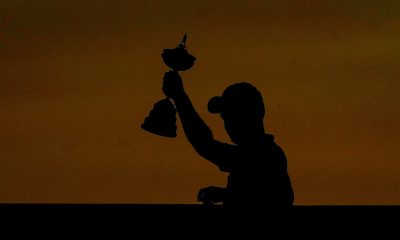



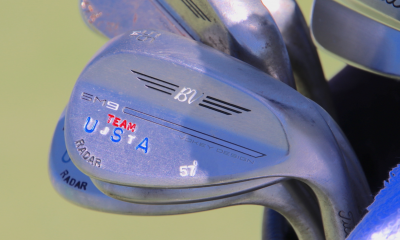



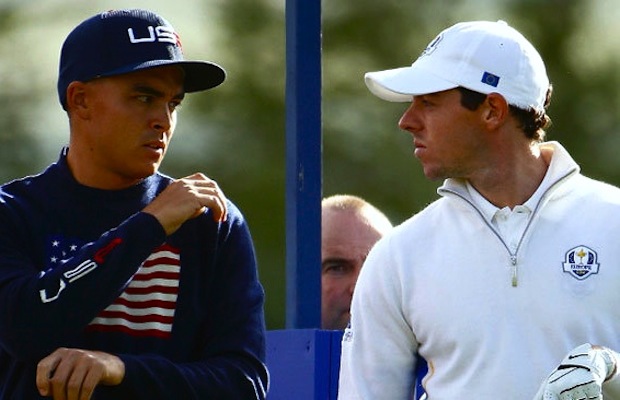
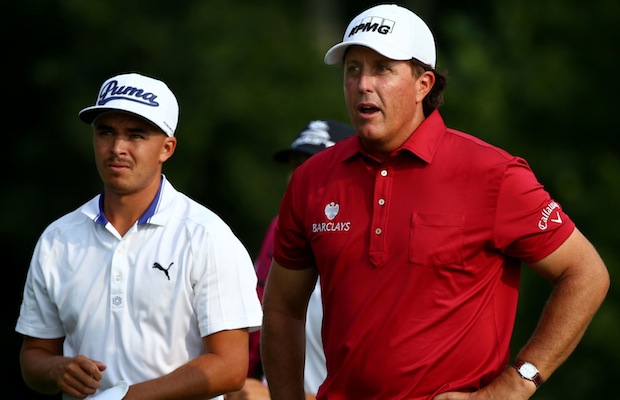








Pingback: Ryder Cup Preview: The Course, Home Field, & Competition | Golf Analytics
Pingback: Watson goes with familiarity for Gleneagles | AdamSarson.com
Pingback: ¿En qué nos deberíamos fijar para la elección del Capitán de la Ryder Cup? - Golf76.com
marcel
Aug 10, 2014 at 9:05 pm
hes gona pick Rory
Ronald Montesano
Aug 8, 2014 at 1:06 pm
Guess what? He’s going to pick himself. He’ll be the first playing captain in over fifty years, he has played well in two major championships and (here’s the funny part) he’s not injured. He just added Steve Stricker as an assistant captain, probably because Stricker is young in comparison to the other assistants.
Stricker is also a possibility as a pick. If one of the guys (Kuchar, Dufner) on the team goes down in Scotland, Stricker will be there and will be a legitimate choice to play.
BogeyFree
Aug 8, 2014 at 10:44 am
My order would be Moore, Bradley, then Na. I’d even take those 3 over Woods or Michelson. At some point it is entertainment and I understand that, so Michelson is probably a lock.
I am older guy, but frankly it’s time to bring some youth to the US side. The team already has Furyk and Johnson, plus Watson and Stricker coaching. How much experience do you need…especially when that experience is more with losing than winning Ryder Cups?
Alex
Aug 8, 2014 at 12:50 am
Nice.
Na could be a golden idea, or turn out to be a total bad move. It’s interesting how much you have to decide if stats alone are worth making a decision on.
I think Na could be a good choice. Unless he can’t rise to the occasion. I’d say, give him a shot.
Any chance we will see a European article soon?
Richie Hunt
Aug 8, 2014 at 9:08 am
I may do a European article. Depends on how many of the players qualify statistically on the PGA Tour so I can have statistical data on them to analyze.
While the data appears to favor the European team heavily, I could say the same for the US team in 2012. Jumped out to a big lead and then lost at Medinah. You never quite know with this rivalry.
ND Hickman
Aug 12, 2014 at 6:58 am
As a Brit I’m confident for Europe this year, but as you say the Americans should have closed things out at Medinah so we’ll just have to wait and see. Either way it’s going to be a brilliant Ryder Cup.
gunmetal
Aug 7, 2014 at 6:48 pm
I absolutely love the Na pick. He sorta flies under the radar but possesses everything you outlined as critical.
I’m not sold on the Bradley pick. I should be, but I feel like he lets his emotion get out of control and it ends up hurting. He got destroyed by Rory last year despite Rory essentially falling out of the car on to the first tee box. I know he’s the popular pick and will likely make it, I just hope he keeps his emotions in check.
I also think another thing to consider is matchplay record. Mahan got a bad rap for what went down in Wales, but he should have been on the team at Medina. Despite winning twice in 2012 (once at the Matchplay) Love chose Striker and Furyk. Mahan won the matchplay!! IIRC Ryan Moore has a nice matchplay record as do Reed and Fowler. I’d be happy with Na or Moore.
Nice read.
SN
Aug 8, 2014 at 12:53 am
Na is a good choice.
I think his pace of play will also pixxed the heck out of Europeans.
and THAT is another advantage.
C web
Aug 8, 2014 at 8:41 am
Just Pair Na with Furyk…. And watch the Euros self destruct
Brad
Aug 7, 2014 at 6:35 pm
Great overall analysis. Even though statistics are an awesome way to determine many things (I am an engineer) in the case I have to disagree with Kevin Na. He is a nice player statistically, but he has really struggled with the mental game over the years. The Ryder Cup may be the most mentally stressful environment in golf. I think it would be tough for him to excel in this environment.
mb
Aug 7, 2014 at 6:02 pm
I feel bad for Tom he’s screwed J Duf just pulled out of the PGA
Richie Hunt
Aug 8, 2014 at 9:10 am
So did Kuchar. Yikes!
Travis
Aug 7, 2014 at 6:02 pm
Nice article